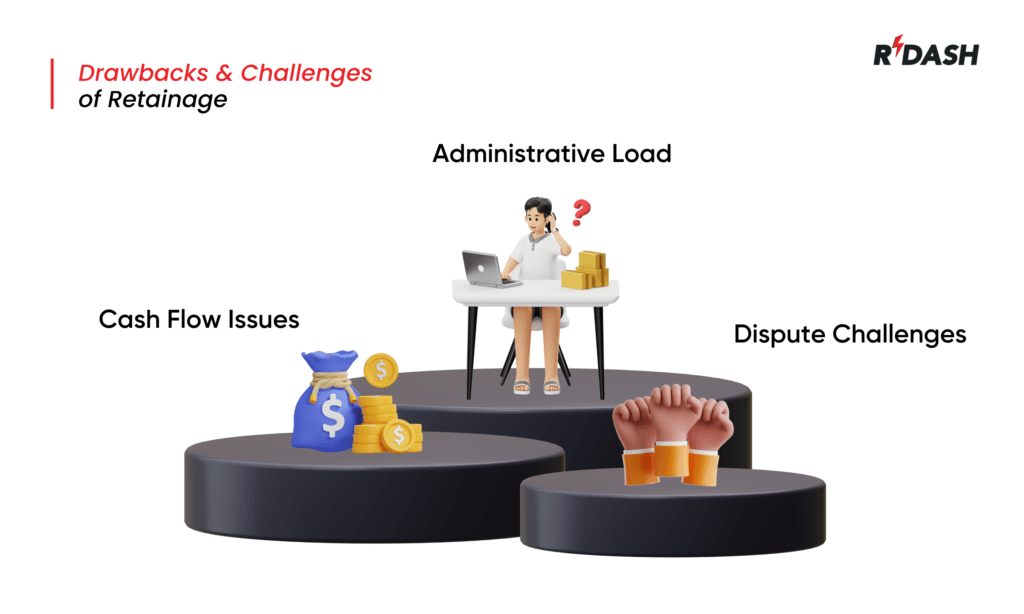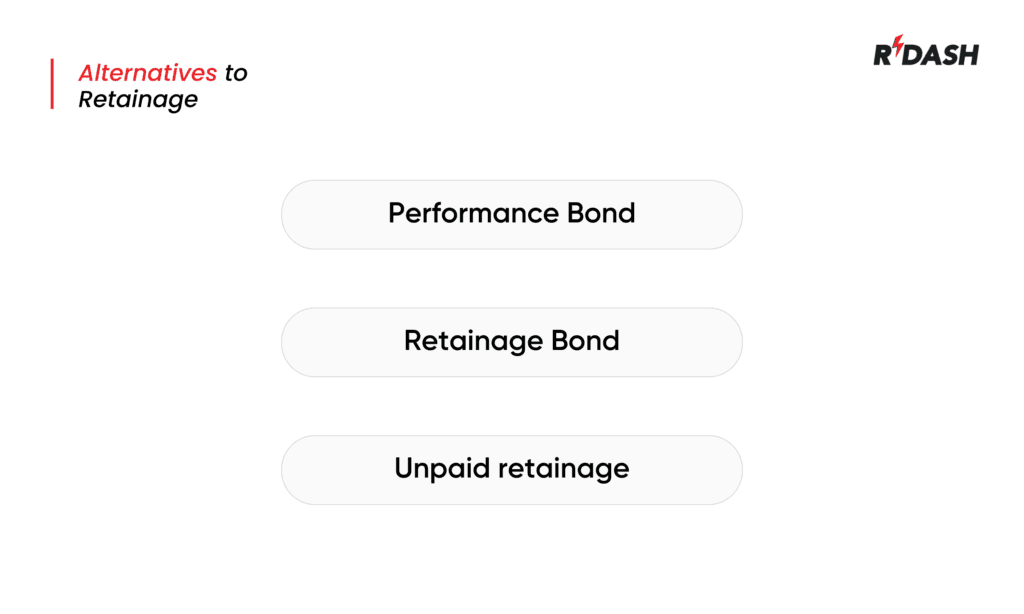The construction industry is relatively risky, and owners will need to safeguard against loss while the contractors look to better their margins. Construction projects are very crucial, and there are different interests at stake; thus, there is increased security for every party involved.
One of the precautions is retainage whereby part of the total amount contracted to an owner is retained in an account held by a contractor until the completion of the project. This allows a contractor to meet his obligations with respect to workmanship as well as deadlines.
Retainage serves as protection for the owner against contractor failure or even an incomplete project. For contractors, retainage is a burden on their financial health that they cannot manage to have good cash flow.
What is retainage in construction?
Retainage is a common construction practice whereby a portion of the payment due to the contractors and subcontractors gets retained until such time that the project must live up to the hiring party’s standards to qualify as complete. It is both a means of money protection and a motivator to keep high-quality standards in the course of construction.
Advantages of retainage
Guarantees of Quality and Completion of Work
Retainage is a very good motivator to the contractors and subcontractors to work up to the standards and the agreed-upon deadlines. Since part of their payment is being withheld, the contractors try to deliver quality work and to rectify any defects that may arise during the process to get their full payment.
It gives leverage in dispute resolution
This will add bargaining power to the project owner since even though the money is present, contractors tend to be willing to compromise on disputes and obey their contract stipulations as much as possible for the disbursement of the final pay.
Enhances Financial Management
For project owners, retainage promotes better cash flow for the project. For example, withholding a certain portion of the payment till the end ensures that owners can have sufficient funds to face the crucial stages of the project or due to some unexpected expenses.
Drawbacks and challenges

Cash Flow Issues
The most significant impact of retainage is on the cash flow of contractors and subcontractors-withholding percentage payments until a project milestone is reached or completed in full can cause very serious cash problems to contractors. This is quite significant to smaller firms, as every payment received is used to keep their operations running and finance new ventures.
Payment delays might jeopardize the project time because there may not be adequate funds for procurement, remunerations to the workforce, and other key costs of operating.
This strain in cash flow can also put pressure on the relationships between the project owner and contractors. Delayed or unclear payments can make trust waive away, and the working environment may be full of tension, thus reducing cooperation, critical for the realization of the project.
Administrative Load
Besides the costs in dollars, retention of funds has a very heavy administrative burden on the contracting firms. The minute details of retention demand record-keeping and frequent consultations with owners of the project to ensure that terms are fulfilled for release of funds. Such an administrative overhead is costly both in terms of resources diverted and time utilized, taking them away from executing projects and business development.
Dispute Challenges
This sometimes can cause retention disputes between the contractors with the project owners over disagreements on the quality and quantum of work undertaken. The project management also becomes complex as in many cases, the contractor needs to achieve subjective standards so that he receives his final retention cheque. Differences always arise because the perception of satisfactory completion varies between the contractors and the project owners.
For this reason, projects often become stuck in long processes of dispute resolution, wasted time that not only amplifies legal and operational costs.
Also, pressure to fulfill often subjective requirements will put stress on relations of contractors and project owners in times of frustration, making it affect the collaborative effort required to deliver a project successfully, which ultimately trickles down to business future and professional reputations as well.
The role of retainage
In turn, the retainage is commonly seen as an insurance of its kind for the owner to use in a project. In such situations, owners may hold back a percentage of the contract amount until the project is fully completed. This ensures that the final approval is not given until the work meets standards, safeguarding against poor or incomplete work. Retainages of 5% and even to 10% in particular form from the total contract are observed against its value.
This financial holding works toward reducing the risk that contractor’s jobs may not be performed after enough payment for their work. It also ensures that the subcontractor is interested in finishing his job as intended and within the set time.
Alternatives to Retainage
To overcome these issues, several alternatives to retainage have been evolved:

Performance Bond: Surety bond issued by insurance companies or banks to guarantee satisfactorily completing the contract with respect to the project. If the contractor cannot execute, the property owner is made good by the bonding issuer as it transfers financial risk away from the contractor and on the shoulders of the bonding company.
Retainage Bond: A retainage bond works like a performance bond but allows the contractor to post a bond for the amount of retainage otherwise withheld. This will thus ensure that the contractor will get full payment in any phase of the project while giving financial security to the project owner.
Unpaid retainage: Parties agree to handle retainage through unpaid balances, keeping some portions of the total contract value unpaid until completion. This makes it easy to account but will still keep some leverage for the owner of the project.
Not in any construction, a compulsory retainer.
One might enjoy preserving or else maintain retention subject only to necessary use consistent with any conditions imposed as established either by contract or between agencies involved. Majority states still have laws that govern and regulate whether employing percentages combined with retention though permitted shall be either less restrictive and lenient insofar as putting in place those conditions to which, and with whom, and the amount could always determine extent with corresponding uses.
State-by-State Retainage Rules
Construction retainage practices vary dramatically state to state in the United States. This variation usually is evidence of local laws and ordinances in an attempt to give the owner’s interests justice with the contractor’s best interests. A construction professional needs knowledge of these differences.
Retainage Fee in the USA
Retainage practice describes withholding one portion of the contractor’s payment until completion of the project, this way ensuring all commitments are fulfilled, and this is a widespread practice throughout the USA, though the specifics may concern the percentage and conditions for release.
Most states set a maximum retainage amount, although that is often around 5% to 10%. Some states even protect subcontractors and suppliers from the withholding of money for too long. For example, in California retainage of public contracts is limited to 5%, whereas for Texas retains up to 10 percent but requires to release one half when it reaches up to 50 percent satisfactory completion. It ensures both that financial protection to an owner of a project is offered and that there is an avoidance of burdening contractual and sub-contractual obligations on them.






